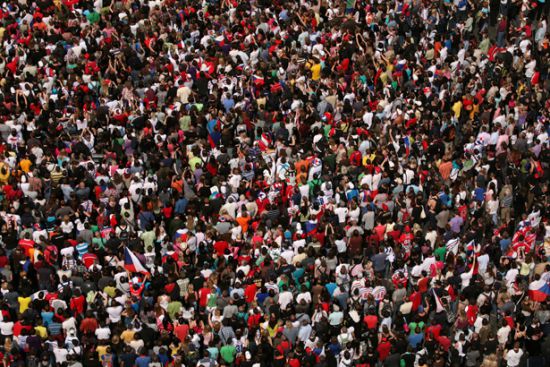 Will This Century See the End of Population Growth? Will This Century See the End of Population Growth?
The human population nearly tripled from 2.5 billion people in 1950 to 7.3 billion today and will continue to grow through 2070, according to two recent demographic projections. After that, demographers disagree on whether the population will shrink or continue to rise.
The United Nations Populaton Division and the International Institute for Applied Systems Analysis (IIASA) have agreed on how the population has continued to rise until now. But their future projections dont exactly line up.
Demographers with IIASA, in Austria, forsee world population peaking around 2070 at 9.4 billion and the making the slow decline to 8.9 billion by the century's end. U.N. Demographers rely on a methodology that applies past behavior and expert opinion about the future to assign qualified probablilies to various population outcomes. They go against the mainsteam belief that by 2050 a stationary world population of 9 billion is inevitable. The U.N. analysts believe strongly that the world poputation will continue it's steady climb into the 22nd century.
When it all boils down, the disagreement between the two groups comes down to two main topics of concern: Africa and the future of education. The U.N. demographers quote recent surveys that show human fertility (number of children in a given area give birth to over a lifetime) is not falling as was once projected in some countries. On the contrary IIASA demographers look to educational trends to set their measures. In every region around the world, including Africa, the number of youth enrolling in schools has been increasing. They believe stongly that these numbers will continue to rise. It is believed that even moderate increases in levels of education achieved reflects directly on the reduction in fertility as a whole.
In the end, despite predications and perceptions that demographers forecast future population, no one knows for sure where we will land. Future population trends may respond to decisions made today, ideally these decision will have a direct impact on unintended pregnancies rather than allow environemental, social, and economic conditions deteriorate until death rates reverse their decline.
Sources: Worldwatch |